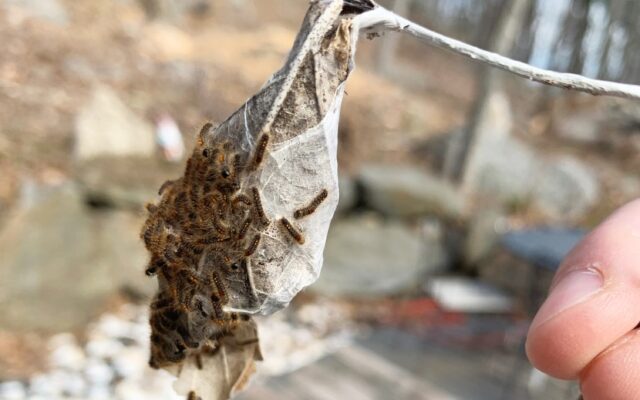
Maine Forest Service launches Browntail Moth Awareness Month
February has been recognized as Browntail Moth Awareness Month in Maine to encourage people to take advantage of the dormant season of the insect and join together to reduce impacts from browntail moth.
Piscataquis County Soil and Water Conservation District will host MFS Forest Entomologist Tom Schmeelk for a webinar discussion on BTM, Emerald Ash Borer and ticks, issues of growing concern in the region from 12-1 p.m. on Monday, Feb. 1. Register now or contact the district for more information (207-564-2321, ext. 3.).
BTM populations in Maine have been in an outbreak phase since 2015 and the pest cannot be eradicated. Most areas of Maine, especially settled areas with significant host tree populations such as oak, apple, crabapple, pear, birch, cherry, or other hardwoods, are at risk of infestation by the caterpillars. While long-lasting tree defoliation and branch dieback are major concerns, BTM’s microscopic, toxic hairs can cause trouble breathing and skin irritation similar to poison ivy from a few hours up to several weeks.
The Maine Forest Service Forest Health and Monitoring Division coordinates within state government, local communities, and directly with citizens to respond to this issue. Winter is the best time to clip and destroy BTM winter webs within reach or hire licensed arborists or pesticide applicators to reduce out-of-reach populations. Comprehensive BTM information and tools compiled by MFS, Board of Pesticides Control, Maine Center for Disease Control, the University of Maine and other partners including research, infestation tracking, FAQs, and educational resources for communities, municipalities, businesses, and healthcare providers, are available on maine.gov/dacf/knockoutbtm.
Follow the four Rs to “Knock Out BTM” in our communities and reduce the itch!
Recognize: Learn how to tell if the trees where you live, work, and play have BTM. Their winter webs can look like single leaves hanging onto twigs or fist-sized clumps of leaves tied together tightly with silk. Knowing where the nests are in your yard or town can help inform your management decisions.
Remove: With permission, use hand snips or extendable pole pruners to remove webs within reach from the ground and away from hazards such as powerlines. Protect your eyes and skin from hairs that might be present from past caterpillar activity. After removal, destroy webs by burning or soaking in soapy water for several days, then dispose of the nests in the trash.
Recruit: Hire professional help to treat webs out of reach or near hazards on the property you own or manage. Line up help during winter. Licensed professional arborists can remove BTM webs in larger trees and shrubs in the winter. In trees where the caterpillars’ hairs cause a nuisance and where it is not practical to remove the webs, Licensed pesticide applicators may be able to use insecticides during the growing season to manage BTM.
Reach out: If you find BTM in your neighborhood, let your neighbors and town officials know. The more neighbors, businesses, and others get together to respond to the problem, the better the results.
Encounters with hairs from BTM caterpillars can cause mild to severe rashes and respiratory issues. Some people say they experience itching with fewer than 10 webs per tree or shrub; others say they have no symptoms from heavier infestations around their yards.
Everyone is invited to participate in the following BTM Awareness Month events or set up community events. Use #KnockOutBTM on social media to share your efforts. Some ideas for activities include mapping infestations on the town and public properties, hosting public service web-clipping events, creating contests for the most webs clipped or other community, and knowledge building activities.